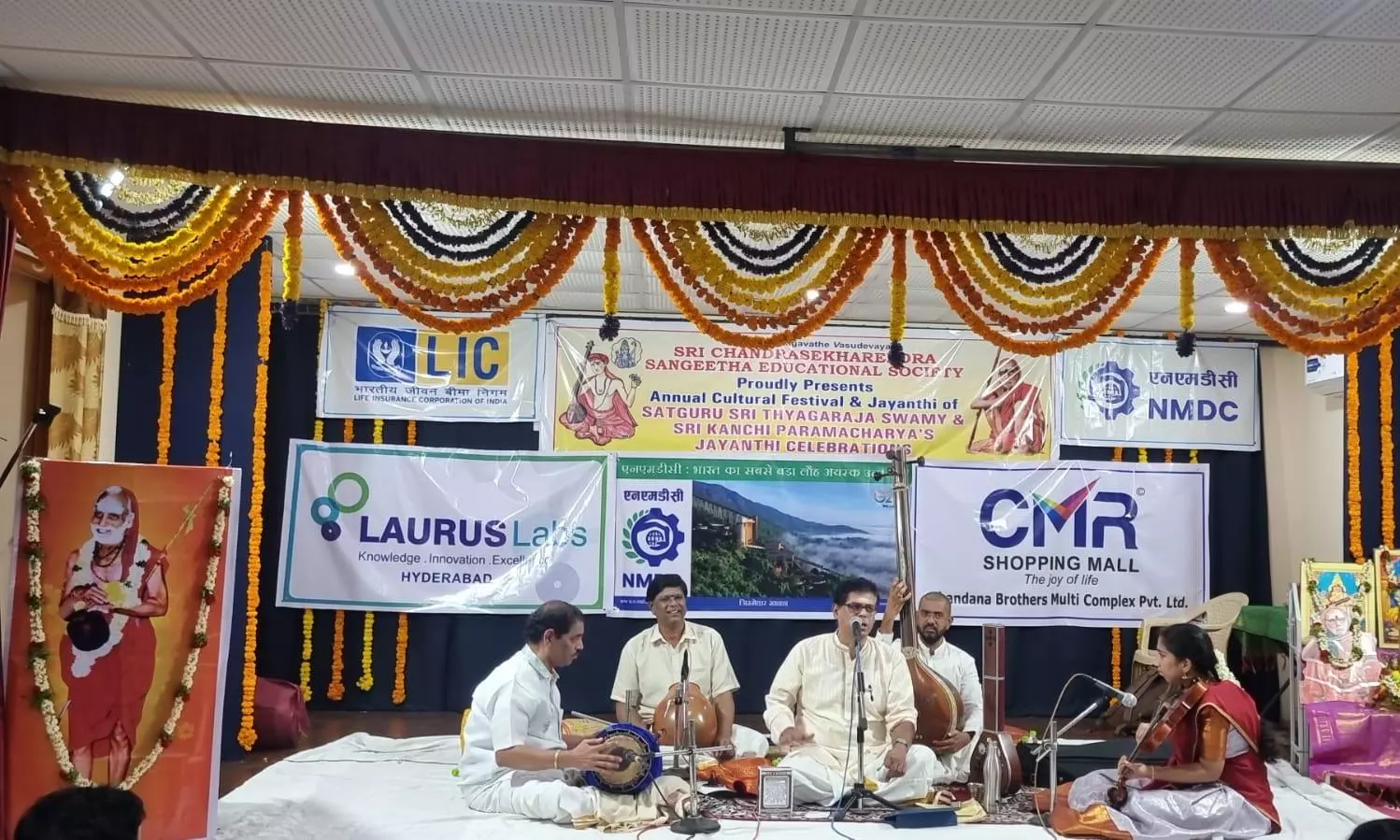An Evening of Test Match-Paced Music
A masterful Carnatic evening honoring classical depth over speed and spectacle

Hyderabad: Aesthetics and orthodoxy can work in tandem. This seemed to be the thematic basis of the Carnatic music concert of the artiste N. Ramamurthy on the penultimate day of the events arranged by Sri Chandrasekharendra Sangeetha Educational Society.
Ramamurthy began the evening with a ‘Sarasijavarnam’ in Kambhoji. His ‘Maha Ganapati’ in Nattai was steady and clearly indicative that the audience was in for red ball music and not white ball. Hailing from the Ariyakudi school of music, the artiste did not deal with Nattai as a speed test.
When he chose Mukhari with a short alapana, the message that the concert is not going to be gymnastic and speed-driven became melodiously clear. After presenting ‘Enthaninne’ of Sri Tyagaraja in Mukhari, he presented ‘Punniyam Oru Koti’ of Periasamy Thooran in raga Keeravani.
A short interlude in Panthuvarali was ‘Ninne Neranammi’, again of Sri Tyagaraja. The sub-main of the evening was Shankarabharanam. Instead of the very regular, popular krithis, Ramamurthy presented ‘Devi Jagath Janani’, a krithi of Swati Thirunal. Not only was the alapana slow, steady and aesthetically endearing, it was a delightful tour into an authoritative, grammatical style of Shankarabharanam. It is not too far to seek what played in the mind of the artiste in choosing the raga. After all, even to the un-initiated the raga rings a familiar bell in the local context.
Then came the masterpiece. Ramamurthy’s scholarly interpretation of the raga Shanmugapriya followed by a tanam kept the audience glued to their seats and in awe. ‘Sri Raja Rajeshwari’ was the pallavi set to Khanda Triputa Taal. Again, in contradistinction to contemporary musicians, Ramamurthy did not labour to go through a mathematical class of listeners. Even if it were nuanced in the pallavi, the rendition was seamless and non-complicated.
Earlier in the evening Ramamurthy rendered ‘Ye Kamakshi’ in Yadukula Kambhoji. With three krithis dedicated to Devi, a glance in the audience revealed the presence of his mother, his sister and his wife.
Throughout the concert he gave space to some fine exhibition of talent by the violinist Y.S.P. Gayatri Sivani. The Thaniyavarthanam was in keeping with the mood, space and presentation of Ramamurthy. Both D.S.R. Murthy on the mridangam and B Janardhan on the ghatam played a perfect tandem and kept aside needless gimmicks.
The gallery was indeed full. It however had no place in the mind and art of all performing artistes. Restricted by time Ramamurthy went into a quick presentation of ‘Marurukonna’ in Khamas and Irakkam Varamal in Behag before he called it a day.
The evening’s concert came a few hours after South Africa’s victory of the World Test Championship, a game of red ball cricket over its white ball cousin. The concert seemed a salute and a recognition that traditional formats are always more endearing than the modernised versions that may impress as long as they last but not thereafter. The organisers must be complimented for getting Ramamurthy in their archive. If this recording is available, it is a must-attend milestone.

